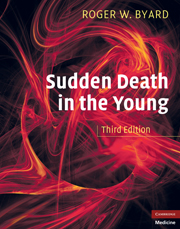Book contents
- Frontmatter
- Contents
- Preface to the third edition
- Reviews of the first and second editions
- Acknowledgments
- Section 1 Introduction
- Section 2 Unintentional trauma
- Section 3 International trauma
- Section 4 Natural disease
- Section 5 Maternal, fetal, and neonatal conditions
- 13 Maternal, fetal, and neonatal conditions
- Section 6 Sudden infant death syndrome
- Appendices
- Index
13 - Maternal, fetal, and neonatal conditions
from Section 5 - Maternal, fetal, and neonatal conditions
Published online by Cambridge University Press: 05 January 2013
- Frontmatter
- Contents
- Preface to the third edition
- Reviews of the first and second editions
- Acknowledgments
- Section 1 Introduction
- Section 2 Unintentional trauma
- Section 3 International trauma
- Section 4 Natural disease
- Section 5 Maternal, fetal, and neonatal conditions
- 13 Maternal, fetal, and neonatal conditions
- Section 6 Sudden infant death syndrome
- Appendices
- Index
Summary
Introduction
Although stillbirths are well-recognized events, the mechanisms may not be understood even after an autopsy has been performed. The unique circumstances of in utero life with dependence on adequate physiological function of the fetoplacental and maternoplacental interfaces, however, warrant separate consideration of lethal conditions in this group. In addition, pregnancy brings with it an array of unique diseases and conditions that may be life-threatening for the mother.
Medicolegal issues may be quite complex and range from problems surrounding determination of whether live birth and independent existence have occurred, to assessing the results of criminal abortions and stillbirths associated with maternal trauma. The law varies in different jurisdictions and may be of little assistance in providing guidelines for the pathologist who is called upon to make judgments on these issues. Both maternal and fetal autopsies require discussions with attending and other obstetricians, clinicians, and anesthesiologists prior to dissection, as a clear picture of the clinical possibilities is required before the postmortem is commenced. While there is no doubt that MRI and sophisticated imaging techniques may provide useful information in cases of unexpected fetal and neonatal deaths, a complete postmortem assessment requires integration of autopsy findings with histology, microbiology, and chromosomal and genetic analyses, all of which require tissue and fluid samples.
- Type
- Chapter
- Information
- Sudden Death in the Young , pp. 525 - 554Publisher: Cambridge University PressPrint publication year: 2010
- 1
- Cited by



